In the realm of the animal kingdom, where rest and survival intricately intertwine, a unique adaptation has emerged: the ability to sleep while standing. While sleep is generally associated with horizontal repose, certain creatures have evolved the remarkable ability to catch their much-needed rest while maintaining an upright posture.
Table of Contents
From majestic horses to vigilant birds, these animals have developed astonishing mechanisms to doze off without compromising their alertness or safety. This blog delves into the intriguing world of animals that sleep while standing, unveiling the physiological marvels, ecological advantages, and evolutionary stories behind this captivating phenomenon.
Below is the list of 13 Standing Animals
- Horse
- Deer
- Giraffe
- Elephant
- Camel
- Llama
- Alpaca
- Ostrich
- Penguin
- Flamingo
- Emu
- Rhea
- Donkey
- Bactrian Camel
- Ibex
Common Bodily apparatus and features of Standing Animals
Animals that sleep while standing have developed various adaptations in their bodily apparatus and features to facilitate this behavior while maintaining their survival. Let’s delve into the key anatomical and physiological aspects of these adaptations:
- Stay Apparatus and Locking Joints: Animals like horses, deer, giraffes, and many others have evolved a specialized mechanism known as the “stay apparatus.” This mechanism involves a combination of tendons, ligaments, and muscles that work together to lock certain joints in the legs, primarily the knees and hocks. When engaged, these locked joints provide structural support to the animal’s body without requiring constant muscular effort. This allows them to stand in a stable position without the need to actively contract their muscles. The stay apparatus is critical in preventing these animals from collapsing while they rest.
- Weight Distribution: Animals such as horses and deer have developed adaptations for weight distribution that enable them to stand for extended periods. When they lie down, their body weight can exert pressure on internal organs and restrict lung capacity. By standing, the weight is distributed more evenly across all four legs, reducing the strain on their internal systems.
- Vigilance and Unihemispheric Sleep: Many animals that sleep while standing have evolved unihemispheric sleep patterns. This means they can rest one hemisphere of their brain while the other remains active and vigilant. This adaptation allows them to maintain awareness of their surroundings even while asleep. For instance, some birds, such as ducks and penguins, can close one eye and rest half their brain at a time, keeping the other eye open to detect threats. This adaptation is particularly crucial for prey animals that need to stay alert to predators.
- Reduced Vulnerability: Animals that sleep while standing often do so to minimize vulnerability. In the wild, lying down can expose them to predators or hinder their ability to flee quickly. By remaining upright, they can react swiftly to danger, whether it’s by fleeing or using their antlers or horns to defend themselves.
- Environmental Adaptations: Different animals have evolved specific adaptations to suit their habitats. For example, penguins and certain sea birds have legs positioned farther back on their bodies, which allows them to stand more upright on land. This adaptation helps them maintain balance and conserve energy while standing for long periods.
- Social Behavior: Many animals that sleep while standing are social creatures. Being part of a group provides additional security and early warning systems against predators. Animals like llamas, alpacas, and deer often sleep in groups, taking turns to rest while others remain vigilant.
15 Standing animals that are known to sleep while standing
Here’s a table featuring 15 animals that are known to sleep while standing, along with their animal type and some key features:
| Animal | Animal Type | Key Features |
| Horse | Mammal | Stay apparatus, weight distribution, slow-wave sleep |
| Deer | Mammal | Stay apparatus, unihemispheric sleep, vigilance |
| Giraffe | Mammal | Stay apparatus, evolved neck, unihemispheric sleep |
| Elephant | Mammal | Stay apparatus, short periods of deep sleep, vigilance |
| Camel | Mammal | Stay apparatus, slow-wave sleep, desert adaptation |
| Llama | Mammal | Stay apparatus, unihemispheric sleep, survival behavior |
| Alpaca | Mammal | Stay apparatus, unihemispheric sleep, social vigilance |
| Ostrich | Bird | Stay apparatus, unihemispheric sleep, long legs |
| Penguin | Bird | Hinged posture, group behavior, unihemispheric sleep |
| Flamingo | Bird | Long legs, hinged posture, unihemispheric sleep |
| Emu | Bird | Stay apparatus, unihemispheric sleep, ground adaptation |
| Rhea | Bird | Stay apparatus, unihemispheric sleep, flightless nature |
| Donkey | Mammal | Stay apparatus, unihemispheric sleep, safety adaptation |
| Bactrian Camel | Mammal | Stay apparatus, hump adaptation, survival behavior |
| Ibex | Mammal | Stay apparatus, agility, adaptation to rugged terrain |
Below are the 13 fascinating creatures that stand while sleeping and what enables them to stand and sleep:
1. Horses

Equipped with a “stay apparatus,” horses lock their knees to sleep while standing, facilitating quick movement if needed. This adaptation is vital for survival as prey animals. Weight distribution prevents strain from lying down, while REM sleep occurs through a form of standing slow-wave sleep. This posture facilitates quick response to danger and maintains social bonds in herds. While standing sleep is beneficial for vigilance, horses require lying down to achieve deep, restorative sleep.
2. Cattles

Cattle, like horses, have evolved to sleep while standing due to their prey animal heritage. This behavior is aided by a unique arrangement of muscles, tendons, and ligaments that allow them to engage a “stay apparatus,” effectively locking their leg joints to prevent collapse. By staying upright, cattle can rapidly respond to threats, increasing their chances of survival. The mechanics of weight distribution also alleviate pressure on their internal organs compared to lying down.
Cattle experience short periods of REM sleep, crucial for cognitive function and well-being while standing in a state of slow-wave sleep. This drowsy posture balances the need for rest with the necessity of vigilance. However, like horses, cattle require recumbent sleep to fully achieve deep sleep stages. Disruption of lying down can lead to health issues, underscoring the importance of both sleep modes in their overall behavior.
3. Flamingos
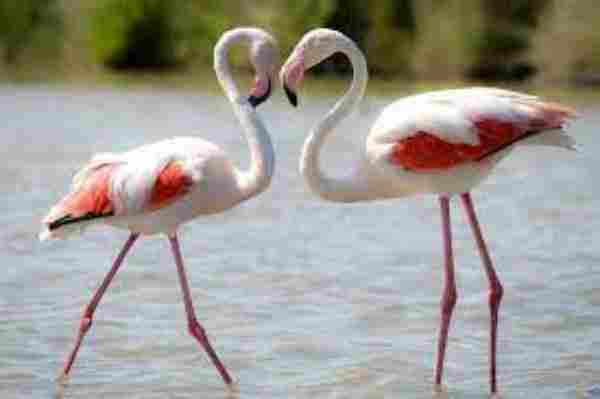
Flamingos’ ability to sleep while standing is influenced by their unique adaptations. Their long legs and specialized joint structure allow them to engage in a “uni pedal resting stance,” where one leg is tucked against their body while the other supports their weight. This reduces muscle fatigue and conserves energy. This behavior is rooted in their aquatic habitats where lying down might expose them to predators.
Flamingos also have the ability to rest half of their brain at a time, known as unihemispheric slow-wave sleep, allowing one eye to remain open and vigilant while the other rests. This duality enables them to maintain awareness of their surroundings and detect potential threats, ensuring their safety during sleep.
4. Ostriches

Ostriches’ ability to sleep while standing is attributed to their physiological and evolutionary adaptations. Their powerful legs possess a “locked” knee joint that provides stability without muscular effort, known as the “stay apparatus.” This posture aids in rapid escape from predators, reflecting their history as prey animals. Additionally, ostriches can achieve restorative slow-wave sleep even while standing, thanks to a unique unihemispheric sleep pattern.
They can close one eye and rest half their brain at a time, allowing them to maintain vigilance with one eye open. This adaptation ensures they’re aware of their surroundings and potential threats. While they can rest on the ground, their ability to sleep while standing contributes to their survival in their natural environment.
5. Giraffes

Giraffes sleep while standing due to their evolutionary adaptations. Their “stay apparatus,” a locking mechanism in their legs, enables them to stand without exerting constant muscular effort. This adaptation, along with their need to remain vigilant against predators, is rooted in their history as prey animals.
While giraffes do lie down occasionally, they mainly rest while standing to quickly respond to danger. They have shortened periods of deep sleep, achieved through intermittent slow-wave sleep. This unique sleep pattern allows them to balance rest with survival, making the most of their environment and minimizing vulnerability.
6. Penguins
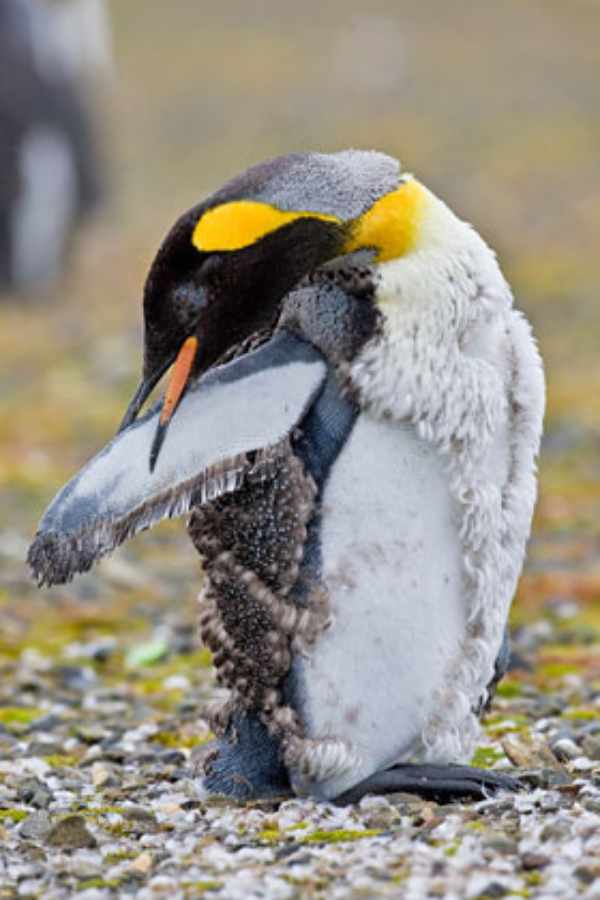
Penguins sleep while standing due to their aquatic lifestyle and the need to conserve body heat. Standing helps them minimize heat loss through their feet, which have less insulation than the rest of their bodies. Their unique adaptations, including a hinged posture that reduces exposure to the cold ground and a tendency to tuck their heads under their wings, aid in heat retention.
Additionally, as Standing Animals their group behavior provides safety during sleep. Penguins often sleep in huddles, rotating individuals on the colder outer edges to share warmth. This combination of adaptations and social strategies allows penguins to rest while staying warm and protected.
7. Emus
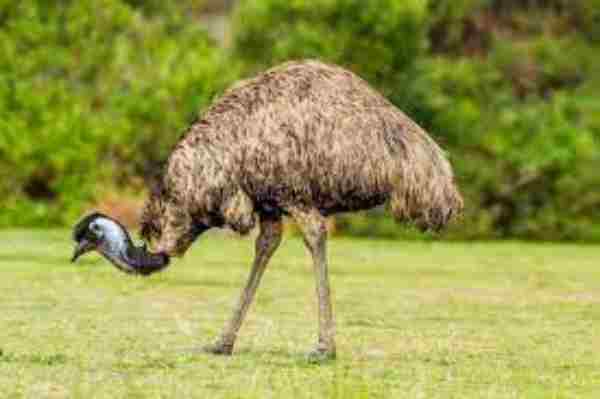
Emus possess adaptations that enable them to sleep while standing. Their legs are equipped with a “stay apparatus,” which locks their knee joint, allowing them to stand without using much energy. This trait is a result of their evolutionary history as flightless birds.
Emus can enter a state of restorative slow-wave sleep while standing, as they are capable of unihemispheric sleep—keeping one eye open and one hemisphere of their brain alert while the other rests. This enables them to remain vigilant for predators and other potential threats even as they rest, highlighting their adaptation to their environment as ground-dwelling birds.
8. Rheas
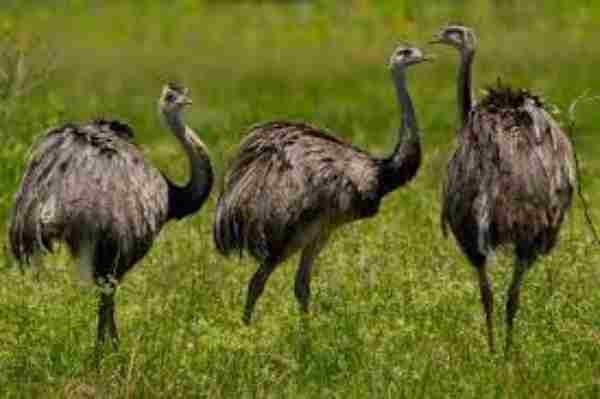
Rheas sleep standing due to a “stay apparatus” in their legs, which locks their joints and conserves energy. This adaptation is crucial for their survival as ground-dwelling birds. They can achieve restorative sleep while standing, thanks to unihemispheric slow-wave sleep, where one eye remains open and part of their brain remains alert. This enables them to remain vigilant even during rest, a trait evolved to protect them from potential predators in their native habitat.
9. Llamas and Alpacas
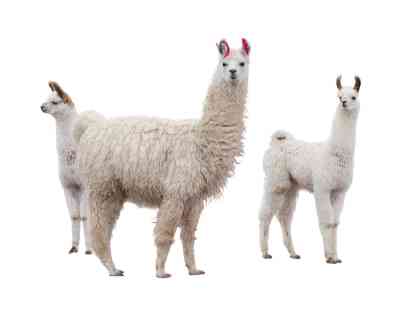
Llamas and alpacas sleep while standing due to their evolved “stay apparatus,” which locks their leg joints and reduces muscular effort. This adaptation aids in quick escape responses, influenced by their history as prey animals. They also experience unihemispheric slow-wave sleep, allowing one eye to remain open and vigilant while the other hemisphere of their brain rests. This enables them to maintain awareness of their surroundings, a crucial trait in their natural environments.
10. Camels

Camels sleep standing due to their specialized anatomy, including a “stay apparatus” that locks their leg joints, enabling them to rest without collapsing. This adaptation stems from their history as desert-dwelling animals, where lying down could expose them to extreme temperatures and predators.
Camelsas Standing Animals can achieve restorative sleep while standing by entering slow-wave sleep and maintaining vigilance through unihemispheric sleep. This unique sleep pattern allows one hemisphere of the brain to stay alert while the other rests. Such adaptations highlight their ability to balance rest with survival in challenging environments.
11. Elephants
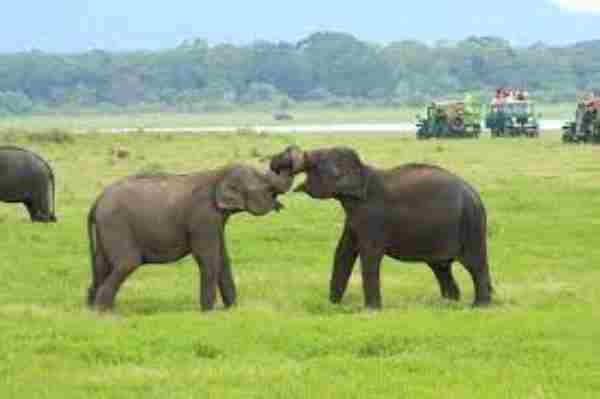
Elephants sleep while standing due to their robust legs and a modified “stay apparatus” that locks their leg joints. This adaptation allows them to conserve energy and remain stable while resting. As large mammals, lying down could be cumbersome and limit their ability to react quickly to danger.
Elephants have relatively short periods of deep REM sleep, which they achieve while lying down. They can doze off while standing, entering lighter sleep stages. This behavior aids in their survival by ensuring they remain alert to potential threats and allows them to balance the need for rest with staying vigilant.
12. Donkeys

Donkeys sleep while standing due to their unique leg anatomy and the presence of a “stay apparatus.” This mechanism allows their leg joints to lock, enabling them to stand without exerting continuous muscular effort. Rooted in their evolutionary history as working and grazing animals, this adaptation aids in quick responses to potential threats and conserves energy.
Donkeys as Standing Animals can achieve restorative sleep in short periods while standing, and their unihemispheric slow-wave sleep pattern lets them keep one eye open and part of their brain alert, maintaining vigilance. This behavior ensures their safety in various environments while still meeting their physiological needs.
13. Deer

Deer sleep while standing due to a combination of evolutionary adaptations that prioritize safety and energy conservation. Their legs have a “stay apparatus” that allows them to lock their joints, providing stability without muscular effort.
This feature evolved from their prey animal history and aids in quick escape from predators. Additionally, deer as Standing Animals can achieve light sleep stages while standing, which helps them maintain vigilance in their environment. They typically rest in areas with dense vegetation or safe surroundings, allowing them to balance the need for rest with the necessity of staying alert to potential threats.
Conclusion On Standing Animals:
We hope you’ve enjoyed this exploration into the intriguing world of animals that sleep while standing. From the majestic grace of giraffes to the resilient stance of camels, these creatures have demonstrated their remarkable ability to find rest while remaining ever-watchful in their environments.
The diverse adaptations of Standing Animals they’ve developed, including the stay apparatus, unihemispheric sleep, and social behaviors, highlight the incredible ways nature shapes life to meet unique challenges. As we reflect on these extraordinary beings, may we find inspiration in their ability to strike a delicate balance between rest and vigilance, reminding us of the beauty and adaptability that exists throughout the animal kingdom.
References:
https://en.wikipedia.org/wiki/Tripod_stance
https://www.nationalgeographic.com/animals/mammals/facts/meerkat
https://www.discoverwildlife.com/animal-facts/what-animals-sleep-standing-up/

Zahra Makda
Growing up enjoying the beauty of my village, a good passion for nature developed in me from childhood. Following my passion for the natural world, I have chosen zoology for my graduation, during my undergraduate degree, I participated in many nature trails, bird watching, rescues, training for wildlife conservation, workshop, and seminars on biodiversity. I have a keen interest in invertebrate biology, herpetology, and ornithology. Primary interests include studies on taxonomy, ecology, habitat and behavior.









